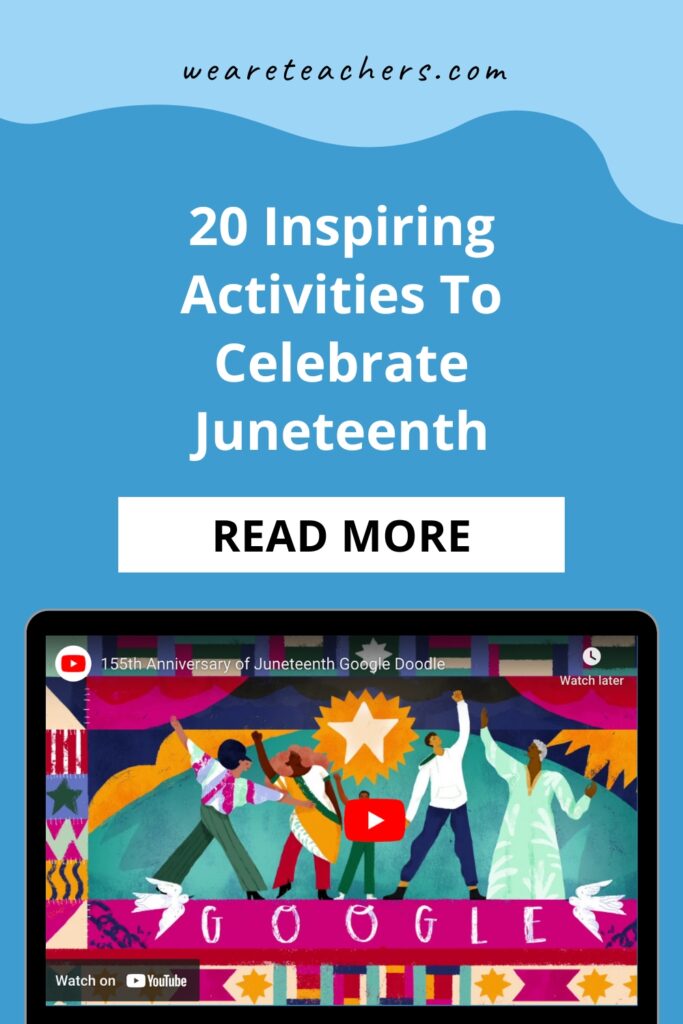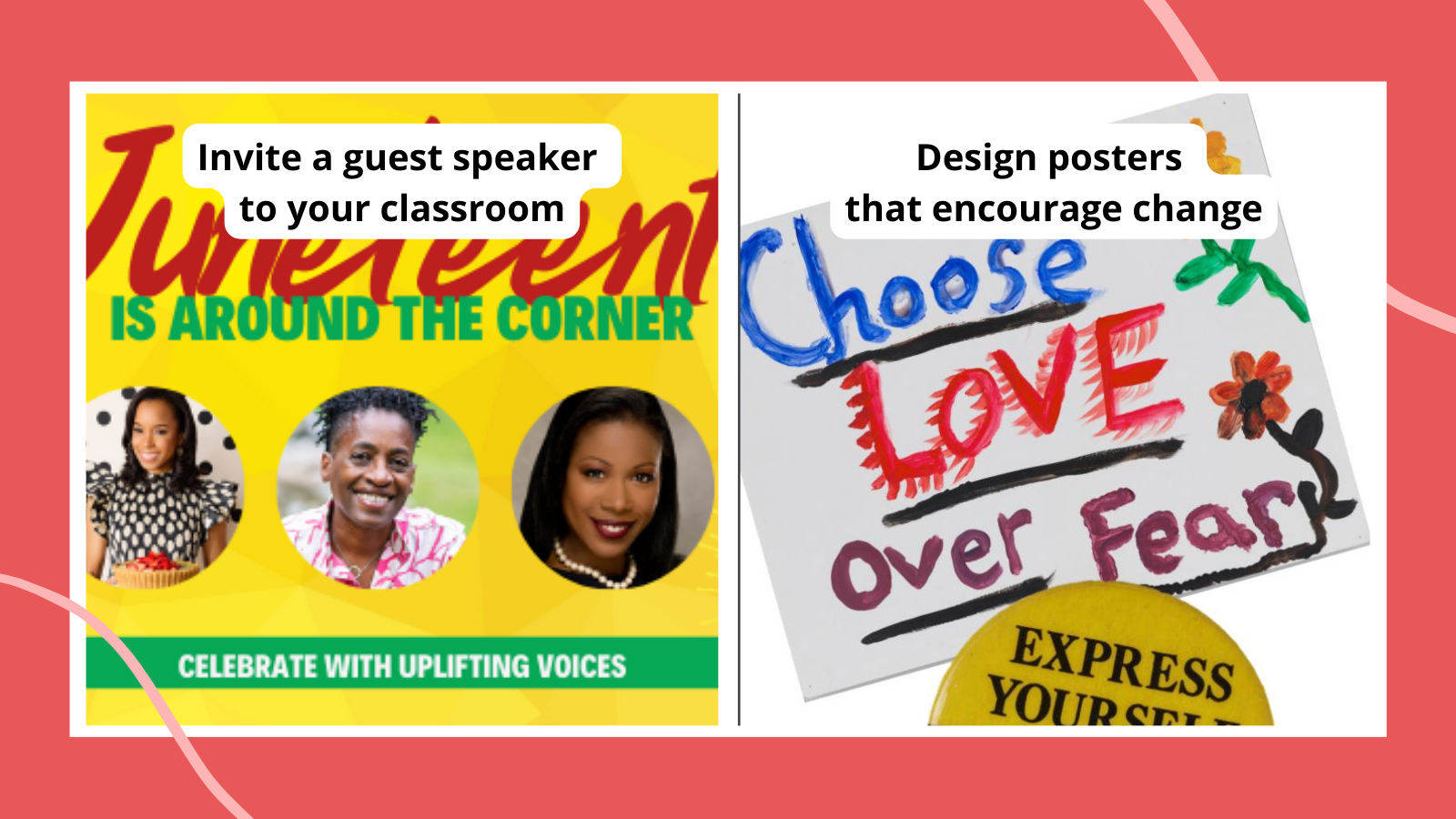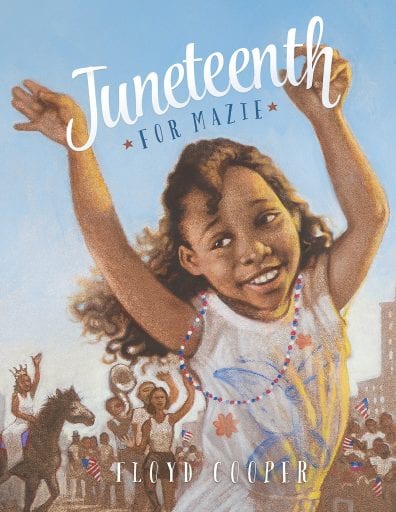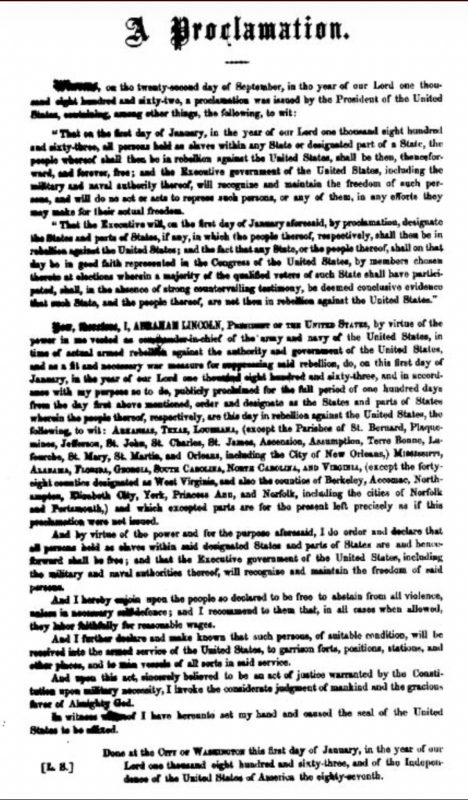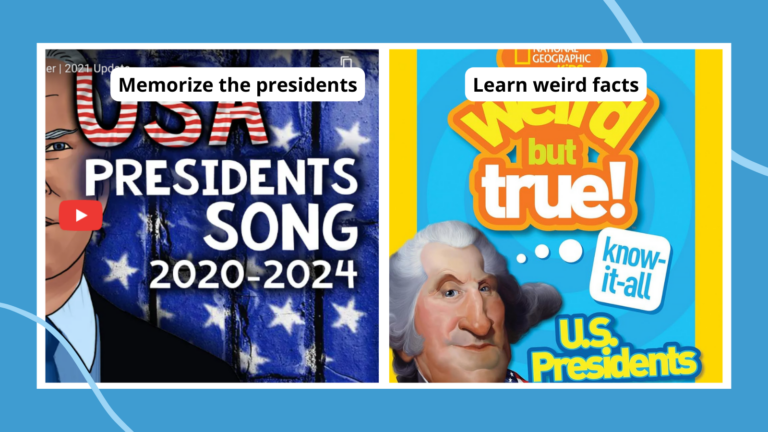Juneteenth, now a federally recognized holiday, is gaining well-deserved recognition across the country. As teachers, we should foster understanding, empathy, and appreciation of Black history and culture in our classrooms throughout the year, but Juneteenth is a special opportunity to do it. Use these Juneteenth activities to spark dialogue, critical thinking, and creativity in your students while empowering them to become change agents for a more inclusive and equitable world.
What is Juneteenth?
Juneteenth celebrates the emancipation of enslaved African Americans in Galveston, Texas, on June 19, 1865. Prior to this date, many enslavers withheld notice of freedom from those they enslaved. Two and a half years after the Emancipation Proclamation had taken effect in the Confederacy (on paper), federal troops arrived in Galveston and Major General Gordon Granger finally issued the following order, informing people of emancipation: “The people of Texas are informed that in accordance with a proclamation from the Executive of the United States, all slaves are free …,” General Orders, Number 3.
While not all African Americans in Texas were freed on this date due to refusal of their enslavers or attacks against them that lead to extreme harm or death, Juneteenth, also known as Freedom Day, Emancipation Day, Liberation Day, or Jubilee Day, is the most widely celebrated days of emancipation in the United States. In its 128th year, Black Americans continue to find ways to celebrate including cookouts, parades, public events, musical performances, activism, and community work. For educators, Juneteenth provides a beautiful opportunity to celebrate Black Americans and to teach authentic U.S. history to their students.
Juneteenth Activities
Here are 20 Juneteenth activities to help get you started.
1. Create pictures, posters, or journal entries
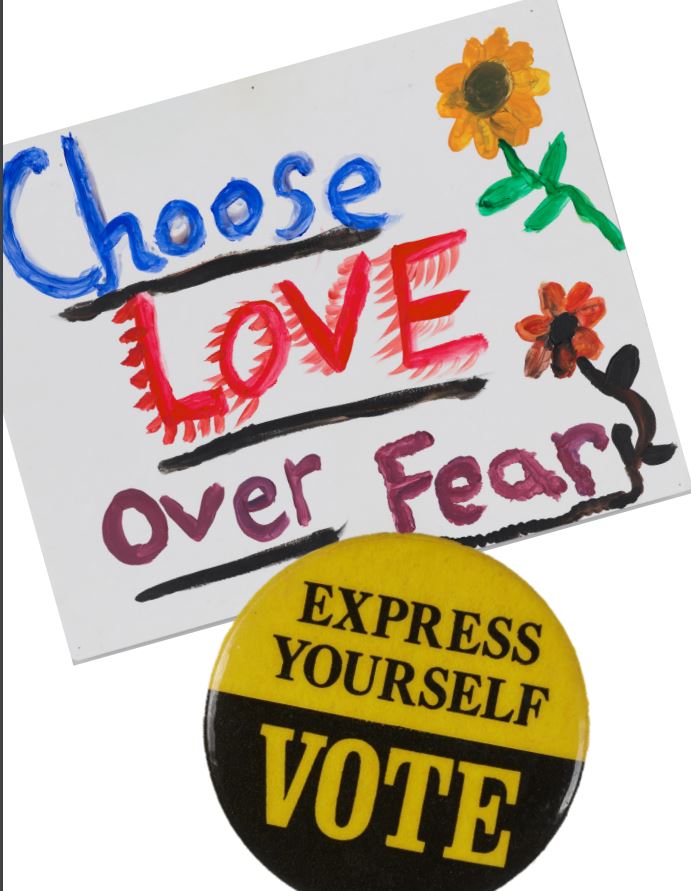
The National Museum of African American History & Culture has created a guide complete with Juneteenth activities, resources, and a book list to support students with celebrating and understanding this holiday. One activity asks students to create posters, pictures, or journal entries about changes they want to see in the world and then discuss how they can help make it happen.
2. Read books about Juneteenth
Dr. Rudine Sims Bishop tells us that books can be mirrors (see yourself reflected), windows (look through to see the experience of others), and sliding glass doors (allows us to enter that world). First, watch the video below to learn more about this important idea. Then share a selection of books that allow your students to see themselves or view the experiences of others in the context of African American history and culture. Here are some Juneteenth book recommendations from PBS Kids and Essence.
3. Watch videos and discuss with your students
For example, use this video illustrated by Los Angeles–based artist Loveis Wise and narrated by LeVar Burton. Then discuss the images and poetry in the video.
Or use this video about Juneteenth on TED Ed.
4. Create a community mural or poster campaign
Art is an accessible form of learning for students to share their understanding through creativity and expression. In this lesson from Learning for Justice, students can create public art to share their knowledge about Juneteenth with their communities.
5. Introduce and discuss primary sources like the Emancipation Proclamation
The Colorado Department of Education describes primary sources as “the raw materials of history—original documents and objects which were created at the time under study.” For Juneteenth, share the Emancipation Proclamation with your students and prepare questions and discussion for your class as you study this source.
6. Read and write about Frederick Douglass’ keynote “What to the Slave is the Fourth of July?”
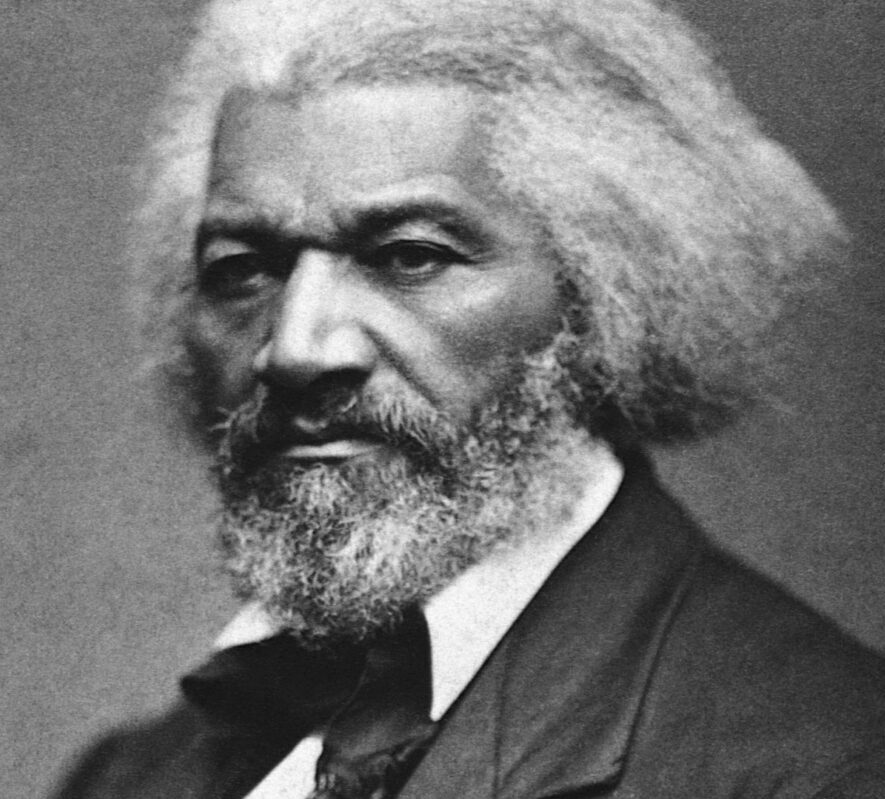
On July 5, 1852, Frederick Douglass gave this speech and stated, “The Fourth of July is yours, not mine. You may rejoice, I must mourn.” Share the speech with your students and complete a writing activity asking students about their thoughts on the Fourth of July and Frederick Douglass’ speech. Did it change their perspective on the holiday?
You can watch the speech, as read by his descendants, in the video below.
7. Teach about reparations
In this lesson from Zinn Education Project, students will “take on the role of activist-experts to improve upon a Congressional bill for reparations for Black people.” You can also learn from Movement for Black Lives (M4BL) and do some learning of your own on the meaning and purpose of reparations.
8. Invite a special guest to speak about Juneteenth
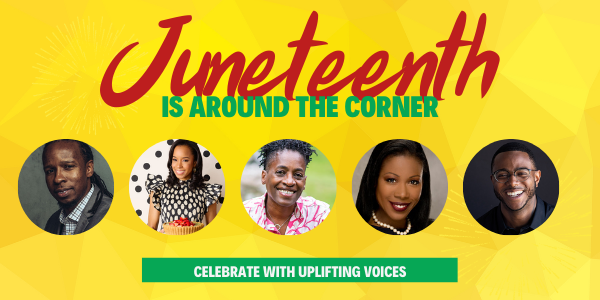
Penguin Random House Speakers Bureau has a list of speakers whom you can invite to speak about Juneteenth. You can also ask someone from your local community to contribute!
9. Bring Black joy to your classroom
The National Museum of African American History & Culture teaches us that Black Joy is “resistance, resilience, and reclamation.” Do some self-learning by reading this article with varying perspectives on Black Joy to give you ideas of how and why to bring this into your classroom during Juneteenth and always.
11. Learn how to have a culturally responsive classroom from Unearthing Joy
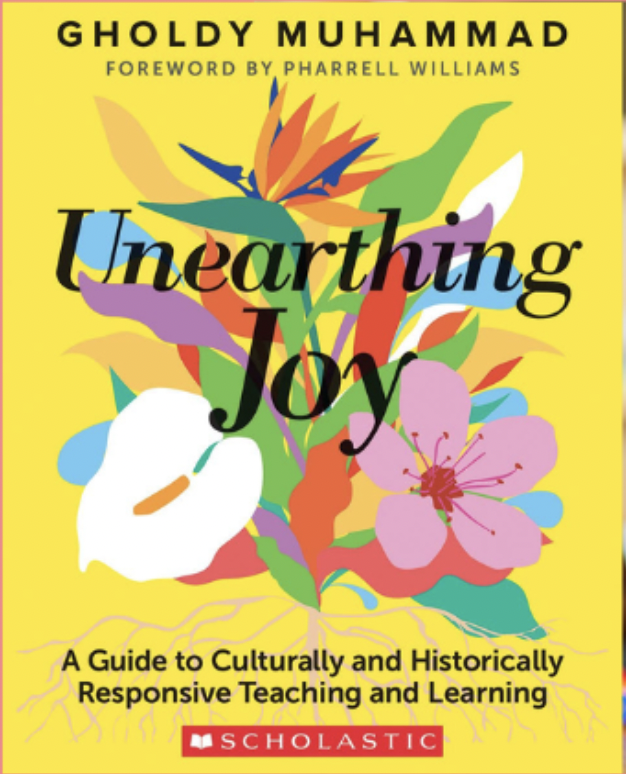
Juneteenth (and always!) is an important time to evaluate your teaching practices, and Unearthing Joy by Gholdy Muhammad is the perfect place to start. In this article, you will learn all about what it means to have joy in a culturally and historically responsive classroom.
12. Celebrate Black creatives
In a time when Amanda Gorman’s “The Hill We Climb” was removed from an elementary school due to a parent complaint, it continues to be important that we share the work of Black authors, artists, and creators.
13. Support local Black businesses
You can do this by sharing about businesses with your students, inviting local business owners to be guest speakers, creating advertisements, or simply purchasing from them! If you are looking for Black businesses in your area, try starting here.
14. Attend a local Juneteenth celebration
In many cities around the country, Juneteenth is celebrated with festivals, barbecues, live music, and more. If you can attend a field trip to a local celebration, do it, or spend a weekend doing a bit of celebrating on your own or with friends and family.
15. Take a virtual field trip to a Black history museum
If you can’t go to a local Juneteenth celebration with your students, or if there isn’t one available to you, take a virtual visit to one of these 12 museums around the country.
16. Learn the Juneteenth song
https://www.youtube.com/watch?v=vMR11wbKrmg
If you haven’t heard of the YouTube channel Gracie’s Corner, now is the time! Share this Juneteenth song with your class and learn the lyrics together.
17. Start a discussion with your class about freedom
In this article by Time magazine, the author writes about the varying definitions of freedom. What does freedom mean to your students? Is everyone free? Use this list of discussion protocols from Cult of Pedagogy to select which protocol will work best for your community.
18. Read and reflect about June 17, 2021
On June 17, 2021, President Joe Biden consecrated Juneteenth as a national holiday. Read his speech and have students do some reflective writing on the following question: Why did it take so long for Juneteenth to be consecrated as a national holiday?
19. Celebrate with red food and learn about its cultural significance
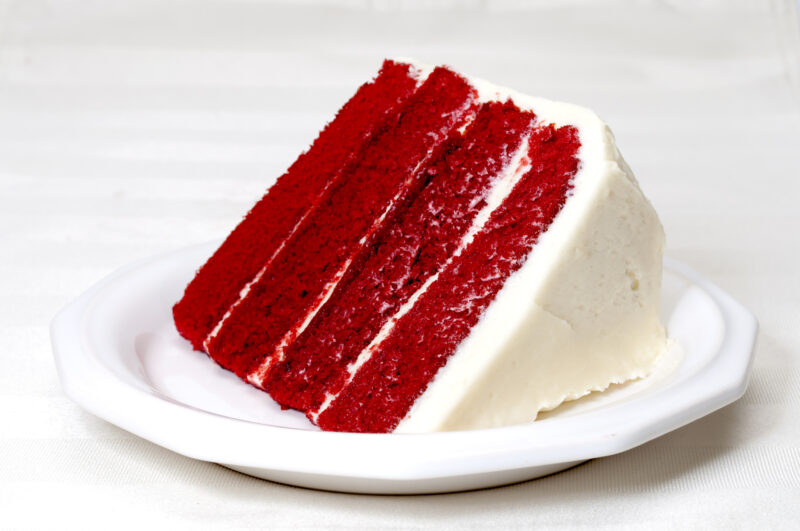
Like many cultural celebrations, you will often find Black Americans celebrating Juneteenth with food! Learn the history of the food eaten on this holiday including the significance of red foods.
20. Commit to anti-racism and celebrating Black history all year long
This Juneteenth, continue your journey in anti-racism and commit to lifelong learning and even unlearning potential biases. Celebrate the true, complete, and beautiful history, stories, literature, and creativity of Black Americans all year long.
What activities do you use to celebrate Juneteenth? Share in the comments.
For more teaching ideas like these, sign up for our newsletters.
